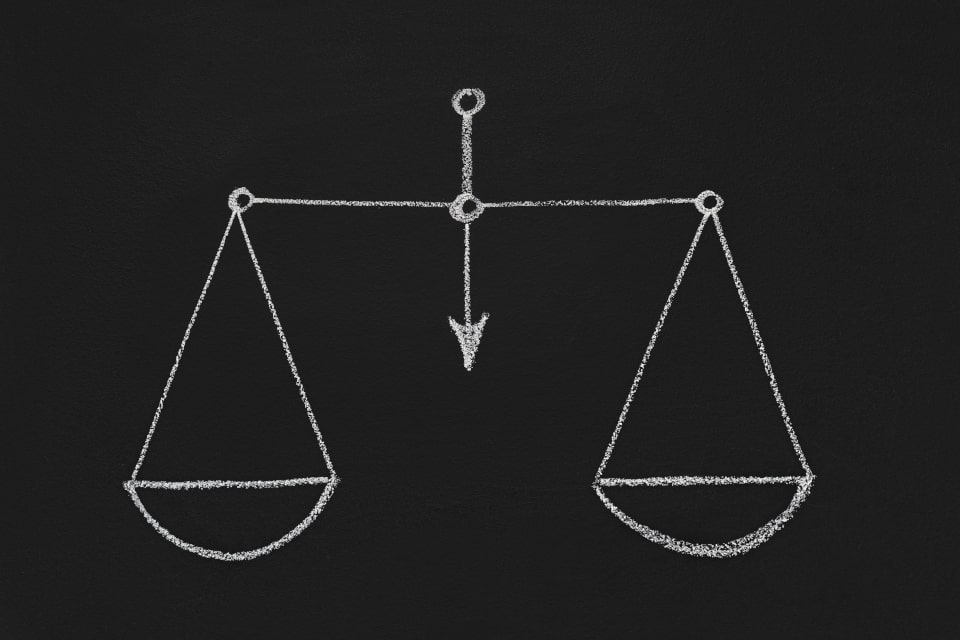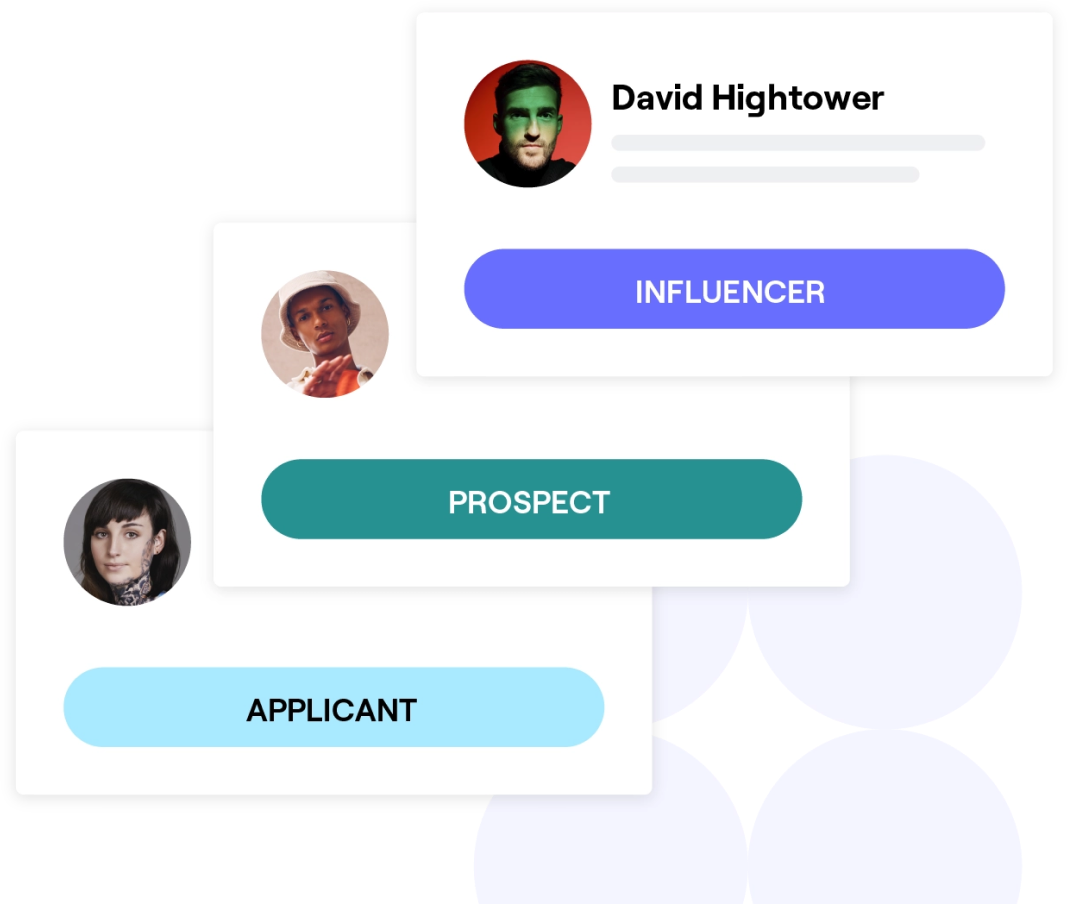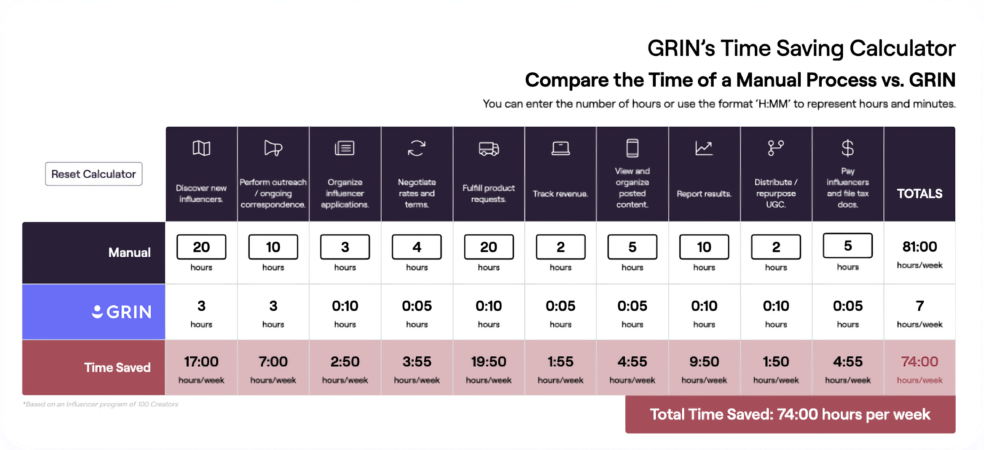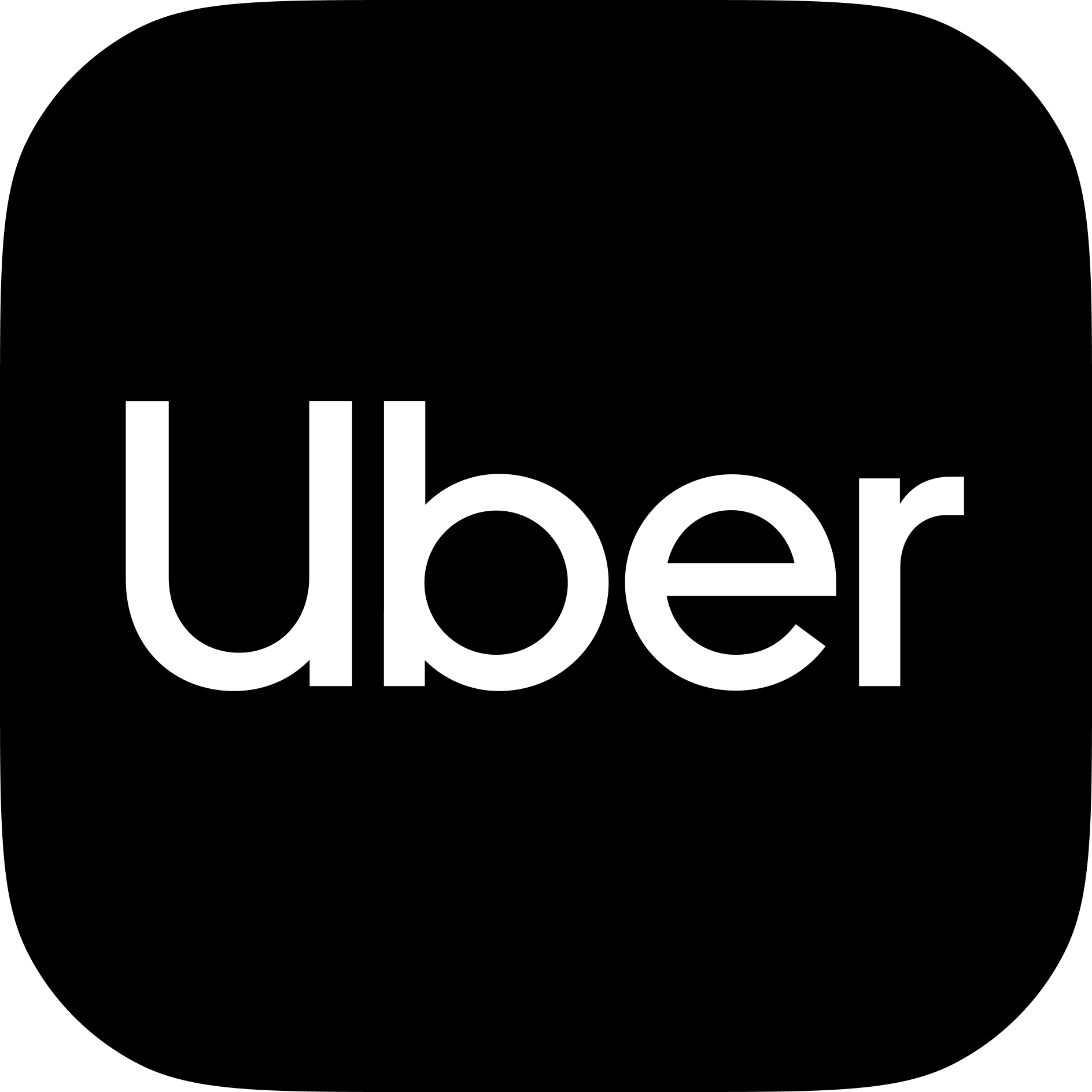If you’re new to influencer marketing, it can seem like everybody is speaking a different language. Between product seeding, KOLs, and EMV, trying to figure it all out can seem like an ordeal.
If only there were a dictionary (or influencer marketing glossary) with all of the terms you need to know …
Activations
What is an activation?
Activations occur when you want to “activate” a creator to post on behalf of your brand. Essentially, it’s any sort of task that you send to a creator. The activation process includes negotiating, signing a contract, developing and sending a campaign brief, and launching the campaign.
Affiliate marketing
What is affiliate marketing?
Affiliate marketing is a subsection of influencer marketing in which brands empower creators with the opportunity to earn a commission. The creator gets a unique link or discount code (or sometimes both) to share with their followers. Every time someone purchases using the link or code, the creator gets credit for the sale and will earn a percentage of the overall sale price.
Brand ambassador
What is a brand ambassador?
Brand ambassadors are creators who have long-term partnerships with a brand. They have a lot of brand loyalty and are likely to only work with a few companies. Ambassadors tend to be brand experts and share their knowledge with their followers.
Brands that develop ambassador programs usually work hard to create a strong community amongst their partners, so ambassadors are usually closely-knit.
Brand awareness
What is brand awareness?
Brand awareness is the general knowledge a person has of your brand. It is the first part of the customer journey, and building brand awareness is essential, as the more people who know about your company, the more potential customers you have.
Partnering with creators can help you build brand awareness by sharing information about your company and products or services with their many followers.
Campaign brief
What is a campaign brief (influencer brief, creator brief)?
A campaign brief is a list of information a brand sends to a creator with all the information they need to develop the perfect posts for a partnership. They also help define expectations, so the creators know what is expected of them. A campaign brief typically includes specifics on:
- Campaign overview: A brief description of the campaign and its goals
- Tasks: The number of posts, the type of posts (video, photo, etc.), and the social platform(s) for the posts
- Payment: Information on the payment structure, whether it’s product gifting, a flat fee, commission, or a combination
- Brand assets/guidelines: Any language you want the creator to use or avoid, high-performing posts for inspiration, etc.
- Content usage rights: The rights your brand will have to repurpose the posts the creator makes for the campaign
Creator economy
What is the creator economy?
The creator economy is the space where we collect, create, and distribute all the content in our current digital world. While people used to tune into companies, now they tune into people. The new billion-dollar brands have arisen from direct partnerships with creators, and companies looking to build major brand love and succeed in this environment should do the same.
Learn more: Understanding the Creator Economy
Creator licensing
What is creator licensing (whitelisting, allowlisting)?
Creator licensing is the process of a brand running ads through a creator’s social media account. Essentially, this means the brand is paying for the ad and managing the details behind the scenes, but people see the ad as coming from the creator.
There are many benefits for both brands and creators when licensing. People often perceive these ads as more authentic than an ad coming directly from a brand, which can lead to more conversions, brand awareness, and trust. On the other hand, creators can grow their followers and earn more money, especially if working on a commission basis.
While the standard industry term used to be “whitelisting,” we’re moving away from that to “creator licensing” because it is more inclusive.
Creator management
What is creator management?
Creator management is a new category that GRIN has pioneered, encompassing a broad spectrum of brand and creator partnerships, including influencer marketing. While influencer marketing largely focuses on the activation of creators whose influence is derived from their social media following, creator management involves developing relationships with affiliates, celebrities, publishers, and more.
“Creator management, to me, is more than just management per se … Creator management is obviously overseeing all your partnerships (content deliverables, contracts, all of that stuff). But really, creator management, at the base of it—at least for me—is about the relationship that you have with the creator as an individual and as a brand.
I consider all of our creators to literally be my best friends. I talk to them all the time on Instagram. I’m constantly hyping them up.
— Olivia Schappert, Director of Social Media Marketing at Boobie* Superfoods
So creator management, to me, is managing that relationship, that bond, and also at the same time, managing our business relationship.”
Creator management platform
What is a creator management platform?
A creator management platform is a tool that helps brands take control of every part of the influencer marketing experience. While not essential for working with creators (especially if you’re only working with a few influencers or are new to the scene), the right creator management platform can help marketers scale their programs and streamline processes.
GRIN is the leading Creator Management platform, and it helps brands in every aspect of influencer marketing, from discovering and partnering with creators to sending out payments and tracking results.
Conversion
What is a conversion in marketing?
A conversion occurs any time a person completes your desired call-to-action. This could include making a purchase on a site, requesting a demo or appointment, subscribing to a newsletter, or something else entirely.
Marketers look at conversion rate (the number of conversions / the number of people who saw the CTA) to determine the success of their marketing efforts.
Earned media value (EMV)
What is earned media value (EMV)?
Earned media value (EMV) is the dollar value of all exposure from third-party organizations.
To simplify it, say a company works with a creator who posts a branded video that goes viral. In response, three news sites write stories about it for free. A marketer could measure the EMV of the post by calculating how much it would cost to have paid placements on each of those sites.
Engagement
What is an engagement in marketing?
An engagement on social media is any kind of interaction with a post. This can include likes, reactions, comments, shares, and more. The types of engagements vary based on the platform.
Engagement is a great way to see how your content (or a creator’s posts) resonates with people. In fact, marketers will calculate engagement rates to determine how successful a post is. Here’s the formula:
Engagement Rate = Total # of Post Engagements / # of Followers
Marketers will also look at a creator’s average engagement rate when evaluating potential brand partners. Ideally, brands should partner with creators with high engagement rates because their content resonates with their audience.
Try it out: GRIN’s free Engagement Rate Calculator
Halo Effect
What is the halo effect?
The halo effect is a psychological concept that shows when a person sees one positive element in a person or brand, they tend to think other elements of them are good, too, even if they aren’t related.
For example, one of the most notable instances of the halo effect is that researchers noticed that people tend to think physically attractive people are more trustworthy and capable, even though their looks have nothing to do with these characteristics in real life.
In influencer marketing, brands can partner with trusted creators to promote a product. When their followers see this endorsement, their respect and belief in the influencer are transferred to the product and brand. This can boost sales, improve brand sentiment, and more.
Impression
What is an impression in marketing?
In marketing, an impression occurs when your ad or post is shown to someone. So if your ad has 80 impressions, it was displayed 80 different times.
This metric can be useful in determining how effective an influencer’s post was by comparing impressions to engagements. If many people saw the ad but very few interacted with it, you might want to try something new.
Influencer
What is an influencer?
An influencer is a person who can affect the purchasing decisions of others because of their authority, knowledge, position, or relationship with their audience. They typically have a large following on social media platforms or other online channels where they regularly share content, opinions, and recommendations.
Influencer media value (IMV)
What is influencer media value (IMV)?
Similar to EMV (see #10), influencer media value is the estimated dollar amount of all exposure generated by a creator. This can include the number of impressions on a social site, any mentions of the partnership on third-party sites, and more.
This metric can give you an idea of how much you would have paid into ads, PR, and more to get the same result.
One thing to note about IMV: It’s very difficult to calculate manually. However, GRIN automatically determines this for each creator, so you can get the data without the frustrating math.
Influencer marketing funnel
What is an influencer marketing funnel?
The influencer marketing funnel is a way of describing the customer journey and how influencers fit into it. There are three main stages:
- Top of the funnel: This is the general awareness stage where people first learn about your brand and products. Creators can aid top-of-funnel marketing efforts with content like unboxing videos, blogs, and branded hashtags.
- Middle of the funnel: This stage focuses on getting potential consumers to engage with branded content. Some great content ideas for the middle of the funnel include contests and giveaways, FAQ live streams, and how-to videos.
- Bottom of the funnel: When customers reach the bottom of the funnel, brands are trying to get them to make a purchase. Creators can help you increase purchases by sharing reviews, testimonials, and discount codes.
You can use this funnel to plan your influencer marketing strategy. If you’re already working with creators, see where they fit into the funnel and where you might need to add more content.
Overall, using the influencer marketing funnel can help keep customers interested in your brand throughout the purchase cycle.
Influencer pod
What is an influencer pod?
An influencer pod is a group of influencers who support one another by engaging with each other’s content. However, this can be less than ideal for marketers looking to work with them, as these influencers may not actually be interested in the content or making a purchase. Instead, they’re inflating their engagement rates to secure better deals for brand partnerships.
Brands may want to steer clear of any creators they know are in pods, as you want to make sure the engagement a creator receives is authentic and can lead to future conversions.
Key opinion leader (KOL)
What is a key opinion leader (KOL)?
A key opinion leader (KOL) is a person who has a lot of authority and sway within a specific community. They’ve built an audience around their area of expertise and have many loyal followers.
KOLs tend to have much more targeted audiences than influencers, so while they may have similar amounts of followers, KOLs’ audiences have at least one significant area of interest in common.
Key performance indicator (KPI)
What is a KPI (key performance indicator)?
A key performance indicator (KPI) is a metric a marketer uses to measure how well something (a creator, a post, a campaign, etc.) performs. The KPIs a marketer chooses depend on what their overall goal is.
For example, if the main goal is to increase brand awareness, then reach, impressions, and engagement rate can be great KPIs to measure success.
Other KPIs include:
- # of conversions
- # of creator posts available for repurposing
- # of branded post link clicks
- Etc.
Learn more: 20 KPIs For Your Influencer Marketing Campaign
Nano influencer
What is a nano influencer (and micro, macro, and mega influencers)?
There are many ways to categorize influencers, but grouping them by the size of their following is one of the most popular. When evaluating influencers based on audience size, there are four main types:
- Nano influencer: 1,000-10,000 followers
- Micro influencer: 10,000-100,000 followers
- Macro influencer: 100,000-1 million followers
- Mega influencer: Over 1 million followers
Each type of influencer has their own strengths and benefits. Nano and micro influencers tend to have more engaged communities and a greater sense of trust. On the other hand, macro and mega influencers can help your brand reach a much larger audience. Therefore, it’s best to work with a mixture so you can see who can provide the most value to your unique brand.
Product seeding
What is product seeding?
Also known as product gifting, product seeding is the process of sending free items to creators. There are two main approaches to product seeding:
- Sending products with no expectations: Brands looking to introduce their products to creators may reach out and ask if they would like to receive a few items with no expectation of posting or talking about it. This is a great technique for determining if a creator truly likes your products before partnering with them.
- Sending products in exchange for posts: This method will require you to create an agreement in advance over what posts they will create in exchange for your products.
One thing to keep in mind: Many creators use their platform as a primary or secondary source of income, so it may be somewhat difficult to find people who will post without a monetary incentive.
Return on investment (ROI)
What is ROI (return on investment)?
Return on investment (ROI) compares how many dollars you earn for every dollar you spend on something. In marketing, people use ROI to measure the overall success of different techniques and see which brings in the most money.
However, looking at ROI as just the amount of money earned from creator-led conversions compared to the amount of money spent can leave you with an incomplete picture. There are many indirect ways to gain value from creator partnerships, including earning content to repurpose across other channels, building brand awareness, and more.
Social proof
What is social proof?
Social proof is the idea that if one person likes an item, another person will too. Therefore, social proof is a key idea driving influencer marketing.
People turn to social proof for many of their purchasing decisions, whether it’s looking up reviews for a product or seeing what people are posting about it online.
Building up a large amount of influencer- and user-generated content is essential for earning purchases due to this phenomenon.
User-generated content (UGC)
What is UGC (user-generated content)?
User-generated content (UGC) is any kind of branded content that comes from a person and not the brand itself. This can be a review on a website or a post on social media about a product.
UGC can be very influential when it comes to the marketing funnel. It can build awareness, teach people more about a brand or product, and provide the social proof a person needs to feel confident about making a purchase.
Brands can also repurpose UGC on their own social media accounts and other media channels if they get the content usage rights from the creator.
Is this influencer marketing glossary not enough?
If you’d like to learn more about influencer marketing in general check out our Learning Center and our Influencer Marketing 101 guide.

















